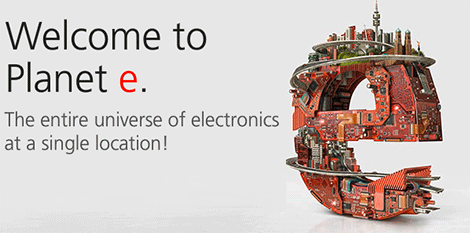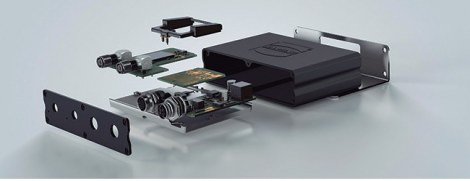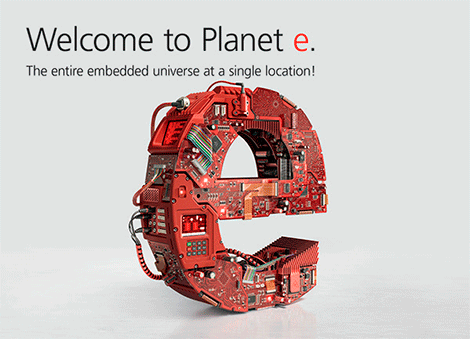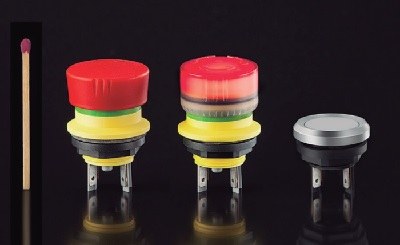There is no doubt that the Internet of Things (IoT) has become a major disruptive force within the electronics industry. The impact of the IoT can be seen in virtually every market sector, from B2B to B2C. While fitness trackers and many other connected devices have become very popular among tech-savvy consumers, the adoption of IoT for industrial applications is just as impressive and promises many business benefits. Organizations are willing to streamline and reap every possible penny of benefit from traditional business operations, and the IoT can help greatly in this regard. The IoT-enabled capture of large volumes of operational data, so-called “Big Data”, is also opening up new business service delivery models that were previously unthinkable.
Not only is the diversity of non-IoT applications surprising, but also the speed with which they are brought to market. Whether for B2C or B2B developments, the ability to introduce new business models, establish new partnerships, reap first-mover advantage, and forge widely adopted ecosystems, largely depends on bringing your hardware designs to market.
Embedded system developers face a number of engineering challenges to get their energy-efficient, high-functionality, and wireless designs to market in a much shorter time frame than previously considered realistic. So it's no surprise that engineers are trying to radically change the approach to IoT-based development.
Most IoT applications have similar components, i.e. multiple edge nodes (sensors), a gateway (to facilitate both short-range and long-range communications), and a cloud-based service or application analytics. Compliance with open systems standards has become an essential feature of any IoT design; This is a way to ensure cross-platform compatibility and broad market adoption of perimeter node sensors, which are suited to a wide variety of applications.
Regardless of the type of application, edge nodes also tend to have the same basic elements. These include the ability to connect to one or multiple sensors; an integrated processing capacity; wireless connectivity; the ability to support “lightweight” IoT protocols, such as MQTT; and finally, device and communications security capabilities. The physical size of the device is also another important factor. Of course, within each of these elements, there are a whole host of additional considerations and challenges to take into account. For example, many IoT devices are battery-powered, requiring processing and wireless components to have a very low power consumption profile. In this constant search for a different approach to rapidly building an IoT design, many in-house developers have turned to the growing number of Single Board Computers (SBCs), which offer a wide range of features, as a way to speed up your IoT design. While there are a wide variety of SBCs that could be potential candidates, developers should carefully consider the technical requirements of their design and compare them with the standard features of available SBCs.
An example of a newly released SBC might be the Intel Edison module, shown in Figure 1. Only 35,5 x 25,0 x 3,9 mm in size, this compact module contains an impressively comprehensive set of features. The postage stamp-sized Edison module houses an Intel SoC device that includes both a dual-core, dual-threaded Intel Atom CPU running at 500 MHz, and a 32-bit Intel Quark microcontroller running at 100 MHz. The SoC, along with 1GB of RAM, 4GB of flash memory, and 40 configurable GPIO pins, certainly satisfies the processing attributes needed for most IoT designs. The GPIOs can be configured as up to 20 digital input/output PWM interfaces, up to 6 analog input interfaces, or UART, SPI, and USB interfaces.
The Edison module, operating at 1,8 VDC, is well positioned for use in battery-powered wearable designs. However, the Edison has much more to offer, easily meeting or exceeding the mainframe connectivity and processing requirements needed for an IoT design. Both 802.11 a/b/g/n Wi-Fi connectivity and Bluetooth 4.0 are provided as standard features. Support for the Bluetooth Low Energy (BLE) profile will be available soon. Figure 2 shows a basic block diagram of the Intel Edison module. The SoC features a pre-installed embedded Linux-compatible Yocto distribution that also includes Python, Node.js, and a comprehensive software stack.
However, the availability of such a comprehensive module is only one aspect for any professional embedded developer to consider. Before you can prototype a design, you need a hardware platform, such as an evaluation kit or reference design, that allows sensors and other hardware to interact with each other. Software compatibility is another crucial aspect to consider. And not just in terms of an IDE to support the embedded development process, but in terms of the full range of tools required for design advancement, such as the Real Time Operating System (RTOS) and any software support packages. the plate.
It is obvious that Intel has invested a lot of effort in the development of this module, since it meets all these requirements. To support the initial design prototype, Intel has designed two motherboards that can house the Edison module. The first, and the easiest, is the Intel Edison Breakout board. Providing a way to breakout the Edison's 70-pin connector, the board has USB OTG (On-The-Go) connectors and Type AB micro connectors, and through a grid of 0,1 through-hole solder headers. inches, offers the 40 GPIO channels which include the PWM, I2C, UART, SPI and the remaining GPIO available. Input power to the module also goes through this board.
Suitable for prototyping a wide range of IoT applications, the Intel Edison Board for Arduino appeals especially to engineers familiar with the Arduino shield approach. This larger and more functional board provides all of the GPIO breakout pins of the Breakout board, but in a broader layout that is pin-compatible with an Arduino Uno R3 shield.
All of this makes it extremely easy to access the GPIOs and accommodates the wide variety of commercially available Arduino shields - this board is the ideal companion for your first Edison build. Since the Edison operates on 1,8V DC, there are various level shifters to accommodate both 3,3V and 5V DC shields; the user can select the option that suits him best. To improve Arduino compatibility, an Intel Edison Arduino IDE is also available. This IDE, which can be downloaded from the manufacturer's website, Intel, provides a quick and easy way to start prototyping your IoT design using an Arduino sketch. Easy and simple getting started instructions as well as links to other tutorials are also available on this site.
Intel's IoT Edition XDK IDE is more aimed at professional developers. This cross-platform toolchain supports Node.js, which is ideal for use in IoT applications. There are other development tool options available, as shown in Figure 3.
The Edison's pre-installed software stack includes the OS loader, Linux BSP, and boot ROM loader, as well as IoT-specific middleware such as an MQTT protocol stack, mDNS zero-configuration multicast service, and a Connman daemon for command line network management.
To further simplify the prototyping process, Intel has developed the Intel IoT Development Communications Connectivity Kit. This set of code samples and libraries, available in both Node.js and C/C++, provides a number of simple IoT application examples, such as a heating control thermostat, library references, and short tutorials. As a complement to this library and to complete the end-to-end capability from edge node to cloud of Intel Edison, access to Intel's IoT analytics website is also available. This simple cloud analytics service enables enrollment of individual Edison module-based devices and, using the code samples, also provides a repository for the data generated from your IoT application. Service features include data analysis, chart visualization, rule-based alerts, and device (IoT node) management.
With its extremely small form factor, the Intel Edison is the ideal compute and connectivity module on which to base your next IoT design. The core hardware platform is perfectly complemented by a series of software tools, connectivity libraries, and samples to ensure your design gets to market in the shortest possible time.







